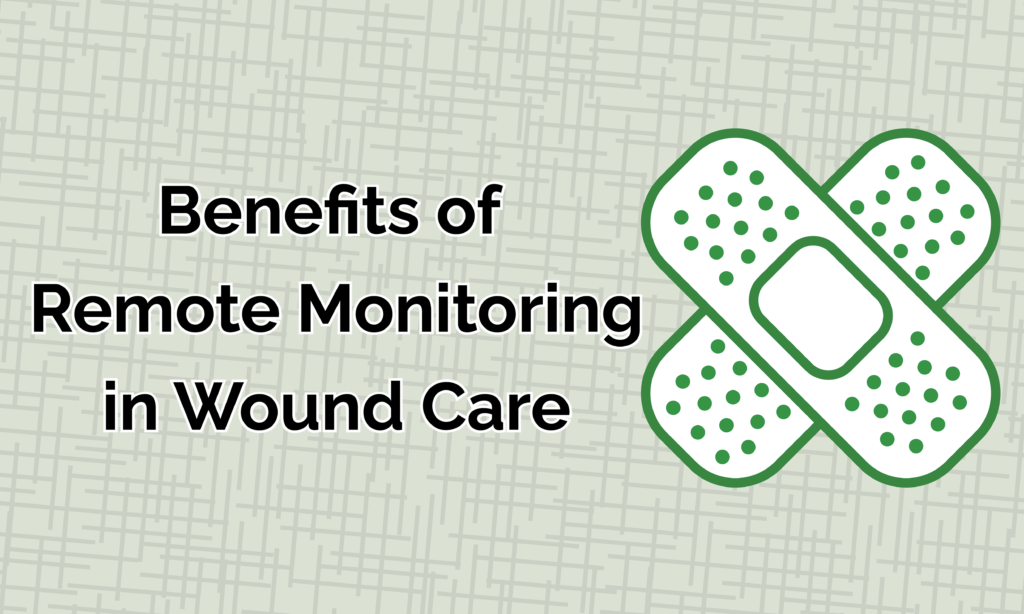Telehealth technologies have changed the way care is delivered for they can span long distances, reach the isolated, and provide real-time interaction with patients at any time and place. One of these technologies is Remote Patient Monitoring (RPM), which has been effective in the management of chronic conditions like diabetes, heart failure, and hypertension through the use of cellular-integrated and fully configured at-home devices.
RPM has continued to innovate care delivery over the years, more so during the pandemic when patients were skipping in-office appointments and staying at home. RPM devices can capture real-time patient data that provides clinicians a clear insight into the patient’s health status. Because RPM works, providers are able to leverage the solution to cater to a variety of care needs like wound care, particularly for chronic wounds that include pressure injuries and diabetic foot ulcers (DFU).
So what is wound care? How does RPM fit into the picture?
Medicare estimates that as much as $96.8 million is directly spent on wound care, which includes non-healing wounds, post-operative wounds, and DFS. In addition, there could be 2.5 million elderly patients in need of wound care. These are patients aged 65 and above, often living in nursing home facilities, suffering from heart conditions, are severely obese, or afflicted with diabetes. Many of these senior patients prefer to age in place and have difficulty keeping their appointments with mobility issues and transportation problems. RPM is the key to delivering effective care to patients wherever they may be.
RPM’s success with Diabetic Foot Ulcers
A fairly recent study on a year-long prevention program for patients with healed DFS provided some noteworthy findings. Patients in the study group were asked to use a foot temperature monitoring mat to record their daily foot temperatures at home. The results were significant with complete elimination of major amputations and a reduction of hospitalizations by 52%.
Participating patients also experienced a reduced recurrence of foot ulcers, ER trips, and outpatient visits. The effectiveness of RPM in managing DFUs will surely lead to its expanded utilization in diabetic care along with the staple blood glucose monitor and reminder alerts for patients to take their insulin.
Innovation in post-op wounds or injuries
Remote monitoring has also been utilized to care for wounds from surgical procedures or injuries. Before COVID came, wound specialists would provide in-office care and conduct home visits to nursing homes or home care agencies. However, many patients including their caregivers and families are now opting for telewound care even as we resumed face-to-face care.
Patients who prefer remote care would still be requiring help in managing their wounds. Providers can now use virtual platforms to examine wounds and look out for signs of infection, ascertain if the dressing needs changing, or prescribe ointments to expedite the healing process. There are also virtual tools that family members can access to teach them the proper dressing of the wounds when necessary. Remote monitoring enables providers to effectively monitor wound healing progress or any signs of worsening. In this way, patients can still obtain quality care albeit remotely.
RPM benefits in wound care
Wound care delivery service is able to capitalize on digital technologies like live video conferencing, electronic data transmission, mobile health platforms, and RPM to provide virtual care.
RPM by itself brings to wound care the following benefits:
1. Positive health outcomes
The study on DFS shows the success of RPM in managing chronic wounds. Taking into account all its applications, RPM has been able to reduce ER visits by a staggering 92% and readmission rates by 40%. By preventing further complications, patients can progress undeterred in their healing process and eventually, lead an improved quality of life.
2. Reduced costs
Chronic wound treatment costs have added significantly to the overall healthcare expenditures. It is expected to increase with an aging population, a higher percentage of comorbidities among patients with chronic wounds, and in these uncertain economic times that could drive costs further. Through telewound care and RPM providing wound specialists with real-time updates, severe wound infections that merit hospitalization can be avoided and costs drastically reduced.
3. Additional compensation
Medicare has expanded the coverage of RPM, which now allows not just primary care providers but also specialty practices like cardiologists and endocrinologists to participate in the reimbursement program. Participating providers can now be reimbursed for all their non-face-to-face activities and receive compensation for their services.
4. Complements in-person care
A hybrid care model of in-person and remote care is an emerging trend, which wound specialists can leverage in managing complex wound care delivery. RPM fills in the gaps between in-office visits to provide an extra layer of care that can improve patient satisfaction and avoid patient attrition.
5. Easy integration of technologies
RPM can be seamlessly integrated into a practice workflow so that clinicians will have more time on their hands to treat patients with more serious conditions. EHRs have been evolving to be more accommodating to RPM data. Others may need additional coding, but some allow for easy integration. Nonetheless, providers may find it helpful to check their existing EHR first and look into its unique functionalities before incorporating it with RPM data.
How do you get started with RPM?
Integrating RPM into your wound care program requires careful planning and investment. You would need to purchase, store, and ship the devices to the patient’s homes. Though many RPM devices are fully configured, patients still need to be coached or educated on its proper use and the importance of taking the necessary measurements at prescribed times.
You will also need the software, technology, and other required infrastructure to offer the whole gamut of RPM services to the patient. More importantly, you need a dedicated team to review patient data and check if preset thresholds are being crossed. If measurements are out of range, clinicians will be alerted to make the necessary intervention and avoid the onset of a medical crisis.
Wound specialists will know the value of RPM in caring for patients, but may not easily decide on its adoption due to some financial costs in starting the service. For many practices desiring the benefits of RPM but reluctant to make the financial commitment, outsourcing to a third-party vendor is the most practical and lucrative solution.
Start it right with ACP
Ascent Care Partners (ACP) offers turnkey RPM solutions to assist clinicians in making sound clinical decision-making through the use of RPM devices to capture timely patient data. Wound care specialty practices can benefit from the program and earn a new revenue stream without the headache and the risk of an increased overhead.



